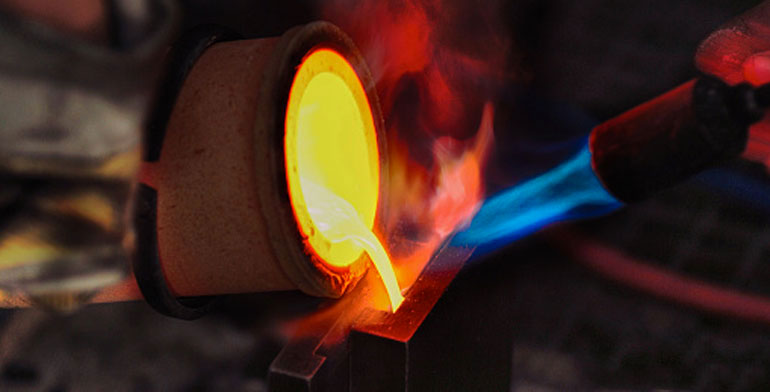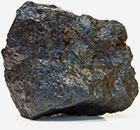Quality Magnetite
From ancient times to the electronics age, history has been driven by magnetite and its many uses

Casting metal is an ancient art. Since the birth of the Bronze Age, the process of metal casting has evolved through incremental improvements to technology and process. While these refinements have driven incremental changes, the core foundry process remains the same.
Liquid, refined metal is poured into a hollow mold that shapes the metal. When the metal cools, it hardens into the casting and the mold is opened to remove the casting, completing the process.
Throughout history, refinements arose and the quality of metals improved. New additives were developed and perfected to bring new qualities to the castings. Colors and strengths improved, giving foundries the ability to cast ever-more-complex shapes. As smelting improved, so too did the quality of base metals and the alloys produced from careful addition of new materials.
Magnetite (Black Iron Oxide) as a Foundry Mold component
Crushed and graded magnetite ore is mixed with clay to form foundry molds and cores. These molds or cores are useful when casting non-ferrous metals or alloys, especially light metals and light-metal alloys
Black Iron Oxide: a brief introduction to magnetite
Iron ores comprise any number of rocks from which metallic iron can be extracted and smelted. These rocks and minerals vary in color, quality and iron content, and within these rocks the most common form of iron found is magnetite.
Whether it’s hematite or magnetite, ores containing very high quantities of either compound – greater than 60% iron – are known as “natural ores.” At the foundry, these natural ores can be fed directly into the blast furnace to produce pig iron, the main raw ingredient used in the creation of steel — a material that ranks among the most critical commodities in the world.
Metal casting 101: sweating like a pig
Pig iron is such a crucial component of the global commodities market that its name has become synonymous with hard work. When smelters produce the pigs, as the refined metal cools, water condenses on the surface, giving the chunks of iron the appearance of sweating.
The quality and properties of pigs are dictated by the various additives. During smelting or direct reduction, oxygen is removed. But these oxide bonds are strong, and to prevent oxygen from just reattaching to the iron atoms, smelters must introduce other elements to which oxygen can bond. Smelters introduce carbon to the process, and this carbon carries the oxygen atoms away from the iron in the powered ore.
Red & Black: know the ore by its color
Whether an ore consists of red iron oxides or black iron oxides, expert smelters can identify the compounds present by their color. The richer the ore in valuable iron, the greater the color.
Color varies in ores from a dark grey to black, or from a pale red to a darker, rusty red. Though the process for extracting the metal from the ore varies slightly, both red iron oxide – hematite, and black iron oxide – magnetite, are great sources for natural ore and play a vital role in supplying the world with steel-making iron.
Request more information about Foundries, Castings & Molds
A friendly Quality Magnetite customer service representative will be in touch to discuss your inquiry

